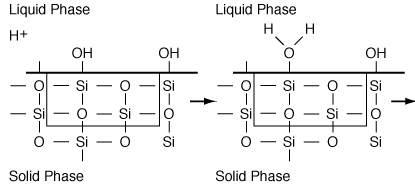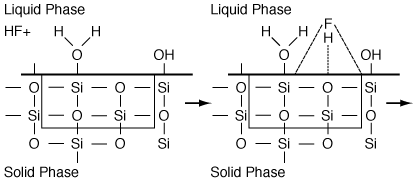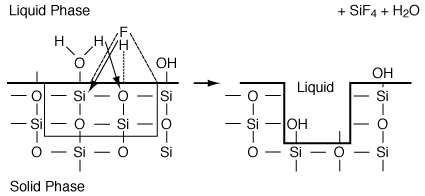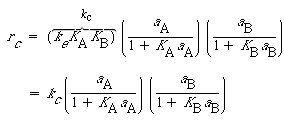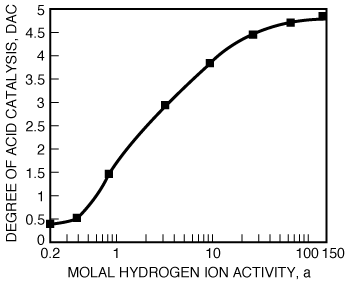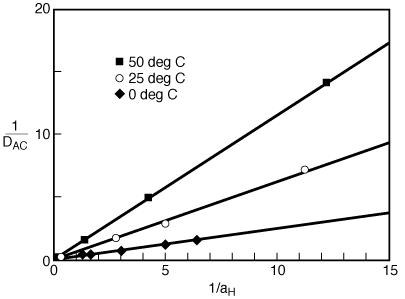Chapter 10: Catalysis and Catalytic Reactors
The following information is taken from the 4th edition of Elements of Chemical Reaction Engineering, so the equation numbers correspond to those found in that bookR10.5 Dissolution Catalysis
Dissolution catalysis is the process in which a species that has no dissolving capacity is added to a system to accelerate the rate of dissolution. To illustrate this process, we shall consider the aluminosilicate system discussed in the Learning Resources section, except that this time we will add a dissolving catalyst B (e.g., H+ ). In this system, B can only adsorb on specific sites on the surface, S´ . These sites are different from those sites upon which A can adsorb. |
|||
|
|
(R10.4-1) |
||
|
|||
|
|
(R10.4-2) |
||
|
|||
|
|||
|
|||
|
|
(R10.4-3) |
||
|
|||
|
|
(R10.4-4) |
||
|
|||
|
|||
|
|
|||
|
|||
|
|
(R10.4-5) |
||
|
|||
|
|
(R10.4-6) |
||
|
|||
|
|
(R10.4-7) |
||
|
|
|
||
|
|||
|
(R10.4-9) |
||
|
(R10.4-10) |
||
|
|||
|
|
(R10.4-11) |
||
|
|||
|
|
(R10.4-12) |
||
|
|||
|
|
(R10.4-13) |
||
|
|||
|
|||
|
|||
